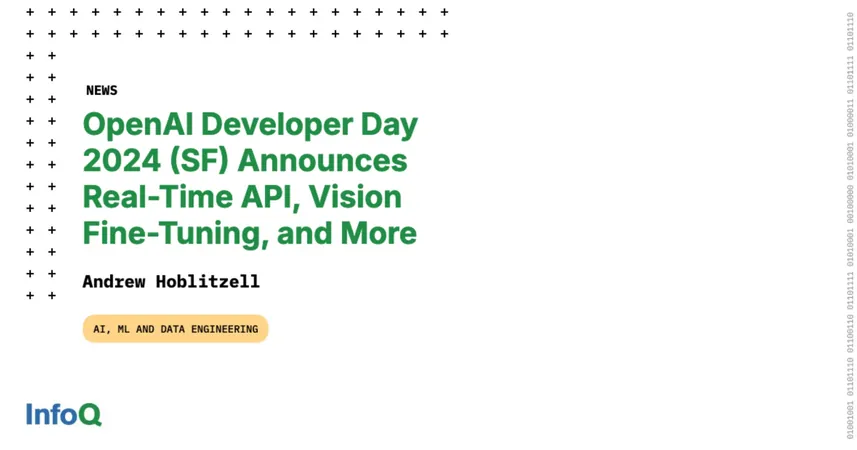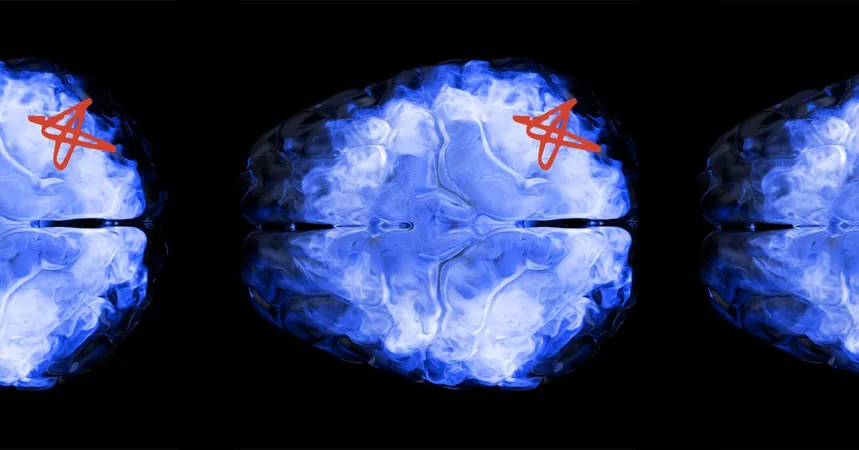
Exciting Innovations Unveiled at OpenAI Developer Day 2024: Real-Time API, Vision Fine-Tuning, and More!
2024-10-10
Author: John Tan
Introduction
On October 1, the tech world was abuzz as OpenAI hosted its Developer Day 2024 in San Francisco, unveiling a suite of groundbreaking features that could reshape the landscape of artificial intelligence. Amidst workshops, breakout sessions, and live demonstrations, key announcements highlighted advancements that promise to enhance real-time capabilities and fine-tune AI functionalities.
Real-Time API Introduction
One of the star attractions was the introduction of the Real-Time API, which enables persistent WebSocket connections. This feature allows for rapid, real-time voice interactions—an essential requirement for applications like virtual assistants and real-time translation services. Developers can seamlessly send and receive JSON-formatted events that represent various forms of interaction, including text, audio, function calls, and interruptions. The notable ability to support simultaneous multimodal output adds another layer of versatility.
At an accessible pricing of approximately $0.30 per minute, developers are presented with exciting new opportunities, especially with the function calling functionality. For instance, in a demonstration with a travel agent application, the API showcased its ability to fetch data from external tools and databases, acting as a resource for carrying out tasks beyond conventional text-based exchanges. OpenAI also recognized the critical importance of user control regarding safety measures, hinting at a prospective "safety API" in the future.
O1 Model Capabilities
Additionally, attendees marveled at the capabilities of the O1 model, particularly in coding applications. In a practical demo, a developer successfully constructed an iPhone app by verbally outlining requirements to O1, signaling that AI can not only generate code but also comprehend and architect it. While OpenAI acknowledged that certain evaluation metrics, like Sweebench, may not fully reflect the model's real-world effectiveness, especially in user interface design contexts, the feedback from developers has been overwhelmingly positive.
Expansion of Vision Model Fine-Tuning
Another groundbreaking announcement from OpenAI was the expansion of fine-tuning options for vision models. This new feature empowers developers to tailor AI performance for specified tasks, with a fine-tuning framework that allows adjustments to hyperparameters, including epochs and learning rate multipliers. By partnering with Weights and Biases, developers will gain insights into their fine-tuning jobs, helping them track model performance effectively. OpenAI assured attendees that they conduct regular automated safety evaluations on these models to align with usage policies.
Model Distillation API Launch
Also making headlines was the launch of a model distillation API along with enhanced evaluation tools aimed at making OpenAI services more affordable and efficient. Distillation technology enables developers to produce smaller models without sacrificing performance—crucial for applications in resource-constrained environments. Furthermore, prompt caching measures have been introduced to help reduce latency by reusing previously processed prompts. To maximize effectiveness, developers are encouraged to structure prompts with static content prioritizing initial interactions.
Conclusion
As the industry continues to evolve, these innovations from OpenAI exemplify the exciting potential for developers. With safety, performance, and affordability at the forefront, it's worth watching how these advancements will impact the future of AI applications. Keep an eye on OpenAI’s developments as they continue to push the boundaries of what's possible in artificial intelligence!


 Brasil (PT)
Brasil (PT)
 Canada (EN)
Canada (EN)
 Chile (ES)
Chile (ES)
 España (ES)
España (ES)
 France (FR)
France (FR)
 Hong Kong (EN)
Hong Kong (EN)
 Italia (IT)
Italia (IT)
 日本 (JA)
日本 (JA)
 Magyarország (HU)
Magyarország (HU)
 Norge (NO)
Norge (NO)
 Polska (PL)
Polska (PL)
 Schweiz (DE)
Schweiz (DE)
 Singapore (EN)
Singapore (EN)
 Sverige (SV)
Sverige (SV)
 Suomi (FI)
Suomi (FI)
 Türkiye (TR)
Türkiye (TR)